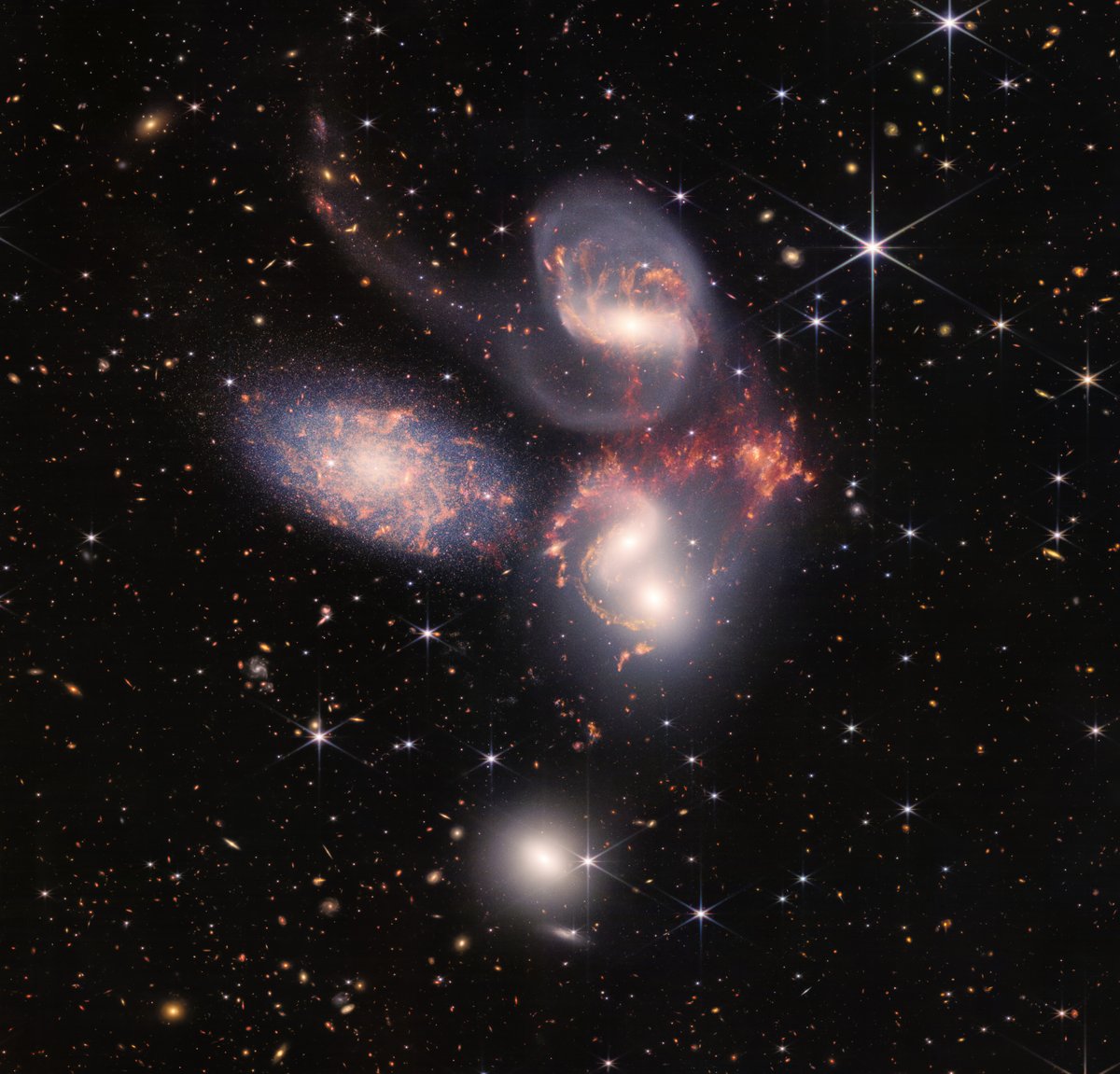
📢 #Webb reveals cosmic cliffs & glittering landscape of star birth, showing us emerging stellar nurseries & individual stars that were previously obscured. This is the edge of nearby star-forming region NGC 3324 in the Carina Nebula. Read more here: esawebb.org/news/weic2205/ or👇 

Called the Cosmic Cliffs, Webb’s seemingly 3D picture looks like craggy mountains on a moonlit evening. In reality, it is the edge of the giant, gaseous cavity within NGC 3324, and the tallest “peaks” in this image are about 58 light-years high 👇 

The cavernous area has been carved from the nebula by the intense ultraviolet radiation and stellar winds from extremely massive, hot, young stars located in the centre of the bubble, above the area shown in the image 👇
The blistering, ultraviolet radiation from the young stars is sculpting the nebula’s wall by slowly eroding it away. Dramatic pillars tower above the glowing wall of gas, resisting this radiation 👇
#NIRCam unveils hundreds of previously hidden stars & even numerous background galaxies. In #MIRI’s view, young stars and their dusty, planet-forming disks shine brightly in the mid-infrared, appearing pink and red 👇
#MIRI reveals structures that are embedded in the dust and uncovers the stellar sources of massive jets and outflows. With MIRI, the hot dust and soot-like material on the surface of the ridges glow, giving the appearance of jagged rocks 👇
These observations of NGC 3324 will shed light on the process of star formation. #Webb will address some of the great, open questions of modern astrophysics: What determines the number of stars that form in a certain region? Why do stars form with a certain mass?
• • •
Missing some Tweet in this thread? You can try to
force a refresh










